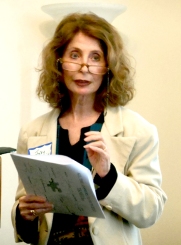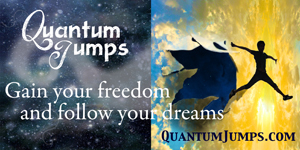The Foundations of Mind III (FOM3) conference took place in Berkeley May 18-20, 2016, featuring presentations by Menas Kafatos, Fred Alan Wolf, Edward Frenkel, Leslie Combs, Henry Stapp, Jacob Needleman, Arnaud Delorme, Peter Duesberg, Glenn Hartelius, Shelli Joye, Beverly Rubik, Judy Gardiner, Wolfgang Baer, Seán Ó Nualláin, Cynthia Sue Larson, Ashok Narashimhan, Neil Theise, Jack Engstrom, Glenn Aparicio Parry, and many more. With two full days of conference proceedings, this year’s conference was a veritable feast of interdisciplinary ideas, wisdom and information from around the world.
The FOM3 conference happily coincided with the release of the first Foundations of Mind book, Dualism, Platonism, and Voluntarism, edited by Seán Ó Nualláin. This book features discussion and dialogue with Henry Stapp and Walter Freeman, among others, and is now available for purchase through the publisher’s website.
Videos from the FOM3 conference presentations will be available through the Foundations of Mind website, and papers will be published in the future, too. People registered through Foundations of Mind are joining in several threads of on-going conversations begun at the conference, and moving forward to explore topics of the quantum paradigm, consciousness, biosemiotics, and higher education.
Honoring Walter Freeman
The remarkable lifetime achievements of Walter Freeman were honored at the start of this year’s conference, with his certificates and diploma on display. Melanie O’Reilly read some words of remembrance written by Seán Ó Nualláin, who got to know Walter while was a visiting scholar in Walter Freeman’s lab at UC Berkeley.

Menas Kafatos

Edward Frenkel, Henry Stapp, Seán Ó Nualláin, and Menas Kafatos
The Nature of Consciousness
Menas Kafatos chaired a session on consciousness, featuring talks by: Menas Kafatos, Arnaud Delorme, Glenn Hartelius, Henry Stapp, Edward Frenkel, Ashok Narasimhan, Neil Theise, Shelli Joye, and Leslie Combs. Arnaud Delorme discussed his work with Dean Radin at the Institute of Noetic Sciences involving experimental approaches to studying possible nonlocal properties of consciousness.

Allan “Leslie” Combs
Glenn Hartelius discussed the challenges of measuring consciousness. Henry Stapp presented his thoughts about quantum mechanics and the role of the mind. Edward Frenkel called for ethics while discussing artificial intelligence and reasons of the heart. Menas Kafatos talked about fundamental awareness and the foundation of the universe. Ashok Narasimhan explained how we can understand consciousness through qualitative content. Neil Theise encouraged us to think about fundamental awareness and the self-organizing universe. Shelli Joye outlined the Pribram-Bohm holoflux theory of consciousness. Leslie Combs delved into the real hard problem of consciousness. Menas Kafatos led a spirited panel discussion that included Seán Ó Nualláin, following individual paper presentations.

Judy Gardiner
Further Explorations of Consciousness
Judy Gardiner chaired a session that continued our exploration of consciousness, with consideration of patterns, thresholds, and patterns featuring talks by: Judy Gardiner, Jerry Gin, Zann Gill, Ryan Castle, and John Engstrom. Judy Gardiner talked about consciousness without constraint, exploring the ways dreams and real life intertwine, and Aha! moments of revelatory insight can arise. Jerry Gin discussed connections between fundamental pattern and consciousness. Zann Gill talked about fundamental pattern and consciousness. Ryan Castle discussed universal consciousness factors. John Engstrom discussed deep ontic and epistemological parsings.

Jacob Needleman and Seán Ó Nualláin
Jacob Needleman asks Questions of Being
Seán Ó Nualláin engaged in a dialogue with Jacob Needleman that many found to be one of the highlights of this conference, delving into the difference between problems we face and how we ask questions that are not related to our immediate concerns. Questions of being such as, “Are we alone in the universe?” “Is there such a thing as God?” “Who am I?” “Why do we live?” “Why do we suffer?” “Is death the end?” “Why is there evil?” “What can we hope for?” “What can we know?” and “How shall we live?” are the great questions that cannot be answered from a problem-solving state of consciousness.

Fred Alan Wolf
Is the Mind/Soul a Platonic Tachyonic Quantum Field?
This was the question posed by Fred Alan Wolf, aka “Dr. Quantum.” Wolf speculates that the mind/soul may be an information field as perhaps envisioned by Plato—the platonic tachyonic quantum field (PTQ)—possibly what the ancients called the Akashic record, interacting with “real” matter fields. Though no material objects manifesting from appropriate quantum fields can travel at or faster than the speed of light, Wolf speculates that the putative platonic mind/soul exists as a PTQ that interacts with such slower-than-light-speed “real” matter through the intermediary of imaginal imaginary-mass objects—tachyons. It is the interaction between the PTQ and matter fields that leads to the physical world and the experience we know as mind/life force.

Shirin Kaboli
Neurodynamics and Ecopsychology
Seán Ó Nualláin chaired this panel featuring talks by: Seán Ó Nualláin, Glenn Aparicio Parry, Sebastien Benthall, Anthony S. Wright, Tiff Thompson, and Shirin Kaboli. Seán Ó Nualláin described work done in conjunction with Karl Pribram between 1999 and 2002, modeling the brain as a harmonic oscillator. Glenn Aparicio Parry said a prayer, and spoke of remembering the true source of our consciousness. Sebastien Benthall described how social scientists are coming to terms with technology through critical algorithm studies and computational social sciences. Anthony S. Wright talked about transforming knowledge into wisdom, describing components of wisdom: flow, ethics, empathy, compassion, and flexibility. Tiff Thompson described her work in the field of EEG neurotherapy and psychodynamic psychotherapy. Shirin Kaboli presented her paper on wholeness and the implicate order in materials science, and its implications for consciousness studies.

Wolfgang Baer
Observer Inclusive Physics

Henry Stapp
Wolfgang Baer chaired this panel seeking to explore the so-called “rose-colored glasses” effect, in which observer characteristics may be inadvertently assigned to observed systems. Papers were presented by: Wolfgang Baer, Henry Stapp, William Bushell, Eric Stanley Reiter, Michelle Kathryn McGee, Cynthia Sue Larson, and Shiva Meucci. Henry Stapp took a fresh look at a way of redesigning Daryl Bem’s ‘sensing the future’ experiment. William Bushell considered how long-term training in highly focused forms of observation potentially influence performance. Eric Stanley Reiter posed a challenge to quantum entanglement through experiment and theory. Michelle Kathryn McGee played with the intersection between matter and energy and light and dark. Cynthia Sue Larson examined evidence of complexity science in quantum phenomena.

Beverly Rubik

Peter Duesberg
Biology Panel and the Work of Peter Duesberg
Beverly Rubik chaired the biology session, which began with a keynote talk by Peter Duesberg, about his work on aneuploidy in cancer. Duesberg presented a case for carcinogenesis being a form of speciation. Peter argues that cancer involves aneuploidy—dysmorphia at the chromosomal level—rather than simple oncogenes. Beverly Rubik discussed her research on distant healing intention on plant growth. Phillip Shinnick discussed how science can help improve the human condition. Glen Rein described a nonlinear optical model of consciousness. Karla Galdamez discussed her research with photon-eye interaction.

Cynthia Sue Larson, Tomoko Parry and Glenn Aparicio Parry

Pre-conference informal social gathering
Interdisciplinary Exchange of Ideas
This third Foundations of Mind conference provided the opportunity for the exchange of ideas with presenters and attendees from many different countries and disciplines over the course of three days during conference proceedings, and at lunch and dinner breaks. From a delightful informal pre-conference gathering Wednesday night at Jupiter, to conference lunches at the International House and a post-conference dinner at Britt-Marie’s, this conference nurtured relationships with old friends and new!

Corca Baiscin featuring vocalist Melanie O’Reilly, Jane Lenoir on flute, and Seán Ó Nualláin on guitar
One of the most memorable highlights of our last evening together was enjoying the musical performance of Corca Baiscin (pronouced Kurka Boshkin) featuring vocalist Melanie O’Reilly, Jane Lenoir on flute, Seán Ó Nualláin on guitar, and Deirdre McCarthy on percussion. “Kurka Boshkin/Corca Baiscin” combines an exhilarating sound of Irish traditional music with a Celtic-Americana contemporary twist, interwoven with jazz improvisation. Inspired by Corca Baiscin, the name of the ancient territory now known as County Clare on the west coast of Ireland, the band inspired many of us to clap and sing along. You can hear a sample of Corca Baiscin playing “The Tamlin” in this video clip: https://youtu.be/6QycRVt8Xf8 and Melanie O’Reilly sing “The Diamond Rocks” here: https://youtu.be/mVRqR_pjVs0
Additional photos and news announcements from the Foundations of Mind III conference can be viewed at the Foundations of Mind facebook page.
 Cynthia Sue Larson is the best-selling author of six books, including Quantum Jumps. Cynthia has a degree in Physics from UC Berkeley, and discusses consciousness and quantum physics on numerous shows including the History Channel, Coast to Coast AM, the BBC and One World with Deepak Chopra. You can subscribe to Cynthia’s free monthly ezine at: http://www.RealityShifters.com
Cynthia Sue Larson is the best-selling author of six books, including Quantum Jumps. Cynthia has a degree in Physics from UC Berkeley, and discusses consciousness and quantum physics on numerous shows including the History Channel, Coast to Coast AM, the BBC and One World with Deepak Chopra. You can subscribe to Cynthia’s free monthly ezine at: http://www.RealityShifters.com


Leave a comment